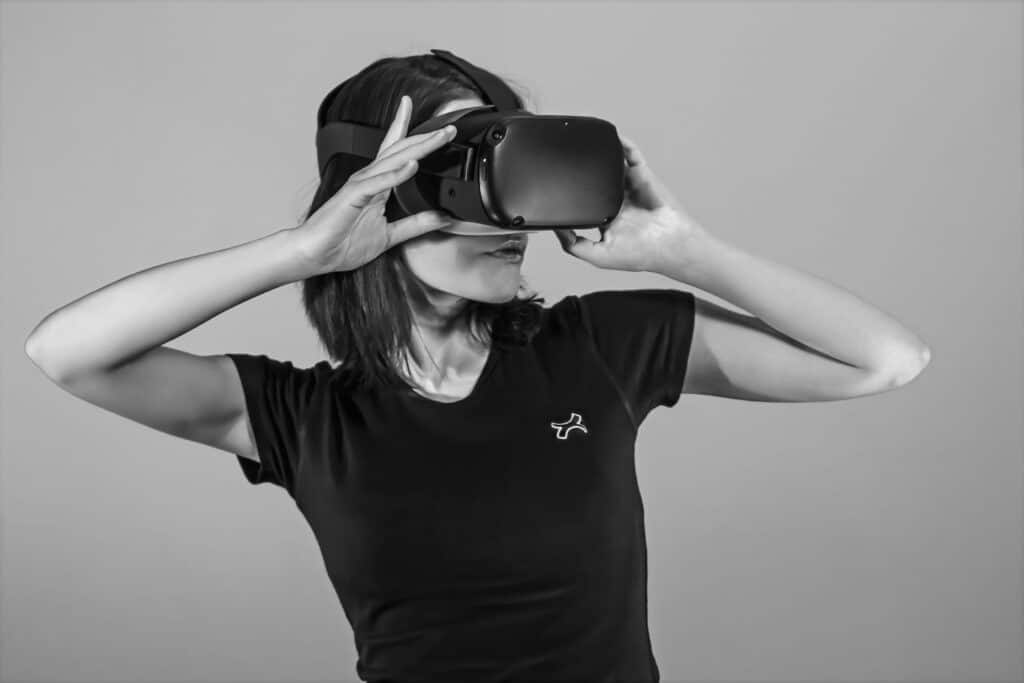The virtual fashion market could reach $50 billion by 2030, according to Morgan Stanley. And it’s just that, almost three out of four people from the so-called Generation Z (digital natives born between the mid-1990s and the 2000s) said they “will spend money on digital clothing and accessories,” according to a Metaverse fashion trends report published by Roblox and Parsons School of Design (November 2022). That same month, Springfield made the leap into the metaverse with the design of a digital fashion collection called Springfield Metacollection that was available for purchase on Roblox and Decentraland for a limited time of one month.
At that time, digital offerings from fashion brands proliferated. Earlier this year, H&M partnered with Roblox and the studio Dubit to launch the virtual experience ‘Loooptopia’, a digital game in the metaverse.

Photo: Alessia Lorenzi.
Virtual fashion and sustainability
Although there are many virtual proposals from fashion brands, at Evlox we pay special attention to those that contain the differentiating element of a commitment to sustainable fashion. This is the case of H&M’s virtual proposal mentioned above, because the experience was designed as an opportunity for the platform’s players to experiment with virtual fashion while learning about circular fashion and clothing recycling, among other options in favor of responsible fashion. In essence, this experience serves as a chance to promote awareness about the need of responsible fashion consumption, while also addressing the significant waste generated by our industry
Virtual fashion concepts have the potential to significantly promote ethical fashion. In fact, we encounter increasing instances of the convergence of virtual and responsible fashion initiatives in the digital realm every day.
It is worth mentioning the ‘fake’ fashion influencer, noonoouri, the instagrammer of the moment, who in reality is nothing more than an avatar created by artificial intelligence, a set of bits that, nevertheless, exerts a great influence on the current fashion consumption habits of young people, with nothing to envy to the most popular flesh and blood influencers. What’s interesting is that noonoouri is clearly committed to sustainable fashion and actively promotes it through their social media content: they advocate sustainable fashion and refuses to wear fur, while still making countless appearances with fashion brands around the world.
The enormous potential of digital fashion, combined with growing consumer interest in circularity and sustainability in fashion, aligns seamlessly with the future of the textile industry. While sustainability may not yet dominate the present landscape, it is undoubtedly the key to the future of fashion.
Virtual fashion in figures
Surprisingly, according to a report by Squarespace, 60% of Generation Z and 62% of Millennials believe that how they present themselves online is even more important than how they present themselves in person in real life.
In 2022 alone, more than 11.5 million creators designed over 62 million virtual garments and accessories on Roblox.
Fashion creators dress millions of people around the world and impact how we express our individuality both in the physical world and now also in the digital world. So much so that, according to Roblox, there are 200 times more creators designing clothing and accessories on Roblox than the estimated number of fashion designers creating physical collections in the United States.
In view of these figures, it is certain that the impact of virtual fashion will only continue to grow. That is why at Evlox we applaud all those digital fashion initiatives that prioritize the promotion of sustainability in the textile industry. It is undeniably one of the most promising strategies for the future of this sector.
In fact, virtual fashion platforms, which we will talk about in a future post, are already shaping the path that the fashion industry will take in the coming years. Connecting wearables, personalized clothing in the smart factory, virtual assistants through artificial intelligence, digital fashion applications… We will talk about all this and much more in the next articles of our blog, so stay tuned!